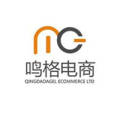What is the current status of e-commerce development in Thailand?
关于这个问题,泰国的电商行业正在快速发展。根据泰国电子商务发展委员会的数据,泰国的电商市场规模从2015年的370亿泰铢增长到2019年的650亿泰铢,预计到2020年将达到850亿泰铢。
以下是泰国电商发展的一些特点:
1. 移动电商的兴起:泰国的移动互联网渗透率高,智能手机普及率也较高,这促使移动电商得以迅速发展。消费者可以通过手机应用程序或移动网站购买商品和服务。
2. 跨境电商的增长:泰国的消费者对国外产品有很高的兴趣,跨境电商得以迅速发展。许多中国、日本和韩国的电商平台已经进入泰国市场,并提供各种产品。
3. 社交媒体和影响者的影响力:泰国人民热衷于使用社交媒体,特别是Facebook和Instagram。许多电商企业利用社交媒体平台来推广和销售产品。此外,泰国的影响者(Influencers)在电商促销中也扮演着重要的角色。
4. 电子支付的普及:泰国的电子支付市场正在迅速发展,消费者越来越多地选择使用电子钱包(如LINE Pay和TrueMoney)进行在线支付。
5. 物流和交付挑战:尽管电商在泰国蓬勃发展,但物流和交付仍然是一个挑战。泰国的地理位置和交通拥堵问题导致物流运输速度较慢,尤其是在农村地区。
总的来说,泰国的电商市场发展迅速,但仍面临一些挑战。政府和企业正在努力解决这些挑战,以进一步促进电商的发展。
Professional answer
Regarding this question, Thailand's e-commerce industry is developing rapidly. According to the Thai E-Commerce Development Committee, the size of Thailand's e-commerce market has grown from 37 billion baht in 2015 to 65 billion baht in 2019, and is expected to reach 85 billion baht by 2020.
Here are some characteristics of the development of e-commerce in Thailand:
1. The rise of mobile e-commerce: Thailand has a high penetration rate of mobile Internet and a high penetration rate of smartphones, which has led to the rapid development of mobile e-commerce. Consumers can purchase goods and services through mobile applications or mobile websites.
2. The growth of cross-border e-commerce: Thai consumers have a high interest in foreign products, and cross-border e-commerce has developed rapidly. Many Chinese, Japanese and Korean e-commerce platforms have entered the Thai market and offer a variety of products.
3. The influence of social media and influencers: Thai people are keen on using social media, especially Facebook and Instagram. Many e-commerce companies use social media platforms to promote and sell products. In addition, influencers in Thailand also play an important role in e-commerce promotion.
4. Popularity of electronic payment: The electronic payment market in Thailand is developing rapidly, and consumers are increasingly choosing to use e-wallets (such as LINE Pay and TrueMoney) for online payments.
5. Logistics and delivery challenges: Although e-commerce is booming in Thailand, logistics and delivery remain a challenge. Thailand's geographical location and traffic congestion issues lead to slower logistics transportation, especially in rural areas.
Overall, Thailand's e-commerce market is developing rapidly, but it still faces some challenges. The government and companies are working hard to address these challenges to further promote the development of e-commerce.
It is developing very well.
1. The Thai government strongly supports
Thailand's policy and economic reforms, and vigorously promotes the development of the electronic digital industry and e-commerce.
2. Platform advantages
Lazada (Ali) and Shopee (Tencent) have become the most popular e-commerce platforms in the local area, and have signed strategic cooperation agreements with the local e-commerce market. The platform advantages are very eye-catching. After entering the market, they have high traffic and are suitable for new sellers in China.
3. Thailand's payment, logistics and network infrastructure are relatively mature
Thailand's logistics market is relatively mature. In addition, Thailand's mobile payment has developed rapidly and has a high degree of popularity, which provides convenience for online shopping accordingly.
Thailand's e-commerce market is in a stage of rapid growth and has great development potential. As of 2021, the size of Thailand's e-commerce market has reached US$500 million, and it is expected to continue to grow rapidly in the next few years.
The following are some characteristics and trends of the current status of Thailand's e-commerce development:
1. Mobile e-commerce: The number of mobile Internet users in Thailand has exceeded 50 million, and mobile shopping has also become mainstream. Most e-commerce platforms have their own mobile applications to provide a more convenient shopping experience.
2. Cross-border e-commerce: The demand for overseas goods among Thai consumers continues to rise, and the cross-border e-commerce market is gradually maturing. China, the United States and Japan are the overseas e-commerce platforms most frequently purchased by Thai consumers.
3. Social e-commerce: With the popularity of social media, Thailand has gradually formed a certain social e-commerce market. Many small businesses on Instagram, Facebook and LINE sell products to consumers through social e-commerce platforms.
4. Localization strategy: The development of the Thai e-commerce market needs to meet the needs of local consumers, and many e-commerce platforms adopt a localization strategy. For example, Shopee and Lazada are the leaders in the Thai e-commerce market. They both use localized marketing strategies and payment methods to meet the needs of local Thai consumers.
In short, the Thai e-commerce market has huge potential. With the popularization of mobile Internet, the development of cross-border e-commerce and the rise of social e-commerce, it will show a more prosperous development trend.
Similar Q&A
recommend I want to start my own business, how can I find a project?
E-c News Continuously pushing e-commerce knowledge to you








Latest Q&A More
-
Do I need a trademark to open a franchise store on Pinduoduo to sell books?
#Pinduoduo#
-
How to withdraw from a Pinduoduo store
#Pinduoduo#
-
How to withdraw from Pinduoduo merchants
#Pinduoduo#
-
How to pay fees when closing a Pinduoduo store
#Pinduoduo#
-
How to withdraw from Pinduoduo
#Pinduoduo#
-
Which store on Pinduoduo is authentic?
#Pinduoduo#
-
Which stores on Pinduoduo can buy genuine products?
#Pinduoduo#
-
How to check the store under Pinduoduo
#Pinduoduo#
-
How to receive Pinduoduo online game products
#Pinduoduo#
-
How to sell the electronic version on Pinduoduo
#Pinduoduo#
E-c News 2025-10-17 12:52:31

- African netizens use China Africa cross-border e-commerce platform for online shopping
- how is the new seller of cross-border e-commerce doing?
- how can cross-border e-commerce Amazon sell on Amazon platform without goods?
- Amazon store opening process and cost analysis!
- Amazon plans to expand its pharmacy business on a large scale and will add same day delivery service


